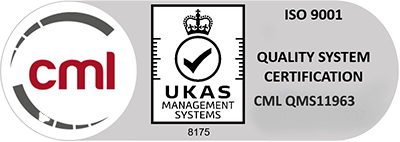Case History: Nestlé
Environmental Goals – A Key Driver for Change
A key factor in the updating of fuelling facilities was the introduction to the York site of the ISO 14001 environmental standard. This requires companies to look carefully at all material and energy inputs to the business, all processes and waste streams. The aim is to reduce material and energy consumption, reduce CO2 emissions and ensure that waste streams and pollution are reduced as much as possible and material recycled wherever this can be achieved. ISO14001 is not a single achievable goal, but a continuous process so companies are obliged to continue to improve their environmental performance.
Improved fuel management was identified as one area where Nestlé could make inroads into their 14001 goals. The aging fuel management hardware had become unreliable and unable to produce adequate information on fuel use and fleet performance. Existing bunkering arrangements, though sound, were inflexible. There were also issues concerning the long term storage of modern diesel. With its seven percent bio-diesel content this gave rise microbial action and the formation of microbe colonies that could affect vehicle performance.
Fueltek Recommendations and Implementation
Fueltek were asked for their recommendations. They suggested a comprehensive upgrade, with an additional 50,000 litre tank to provide a strategic fuel reserve, special pumps and filters, new fuel management units, a tank contents monitoring system and the latest software for effective access control, reporting and analysis.
The new fuel tank comprises a double walled tank, with in-built bunding that was easily installed on a concrete base, without any need for extensive civil works. The tank is fitted with pumps and filters that remove water arising from the bio diesel content, eliminating microbial action and avoiding the microbes forming colonies in the fuel during long term storage.
Tanks incorporate Tank Watch, a system which provides accurate information on current stock, available tank capacity (ullage) and deliveries. The system has a number of alarm states, including water detection, leak detection, and high or low level alarms. An audible and visible alarm is sounded if Tank Watch detects low fuel stocks or a danger of overfilling. This alarm interfaces with the fuel management software and will send an e-mail alert on the manager’s PC or post a text message reminder to a mobile phone. The system will even provide early warning of tank leakage if unaccountable reductions in contents are recorded.
Access to fuel is regulated by two Fueltek FT4000AP units which act as both the fuel management system and control the pump. These provide speedy, but regulated, access to fuel supplies by means of a robust tag that identifies the vehicle and driver. On presenting the tag the unit prompts the driver to enter the latest mileage reading via a robust keypad before fuel delivery. Capturing this essential data is crucial to the fuel management system as it allows subsequent analysis of fuel usage by driver, vehicle, journey type and other factors.
Collection, analysis and reporting of the information gathered from Tank Watch and the fuel management system is handled by the Fueltek Fuel Management On-line (FMO) software package. This is designed to gather the data and present this to managers via easily customised reports. These highlight where performance falls outside pre-set ranges so that the manager can identify investigate and remedy the fault more easily.
Fueltek will host the software, customised settings and data for Nestlé on their own servers – reducing their overhead on IT support. Reports from the system can be accessed by authorised Nestlé managers via the company intranet. This enables access to data and action to be initiated from the desktop in the office or any mobile device that has a valid connection to the system.







